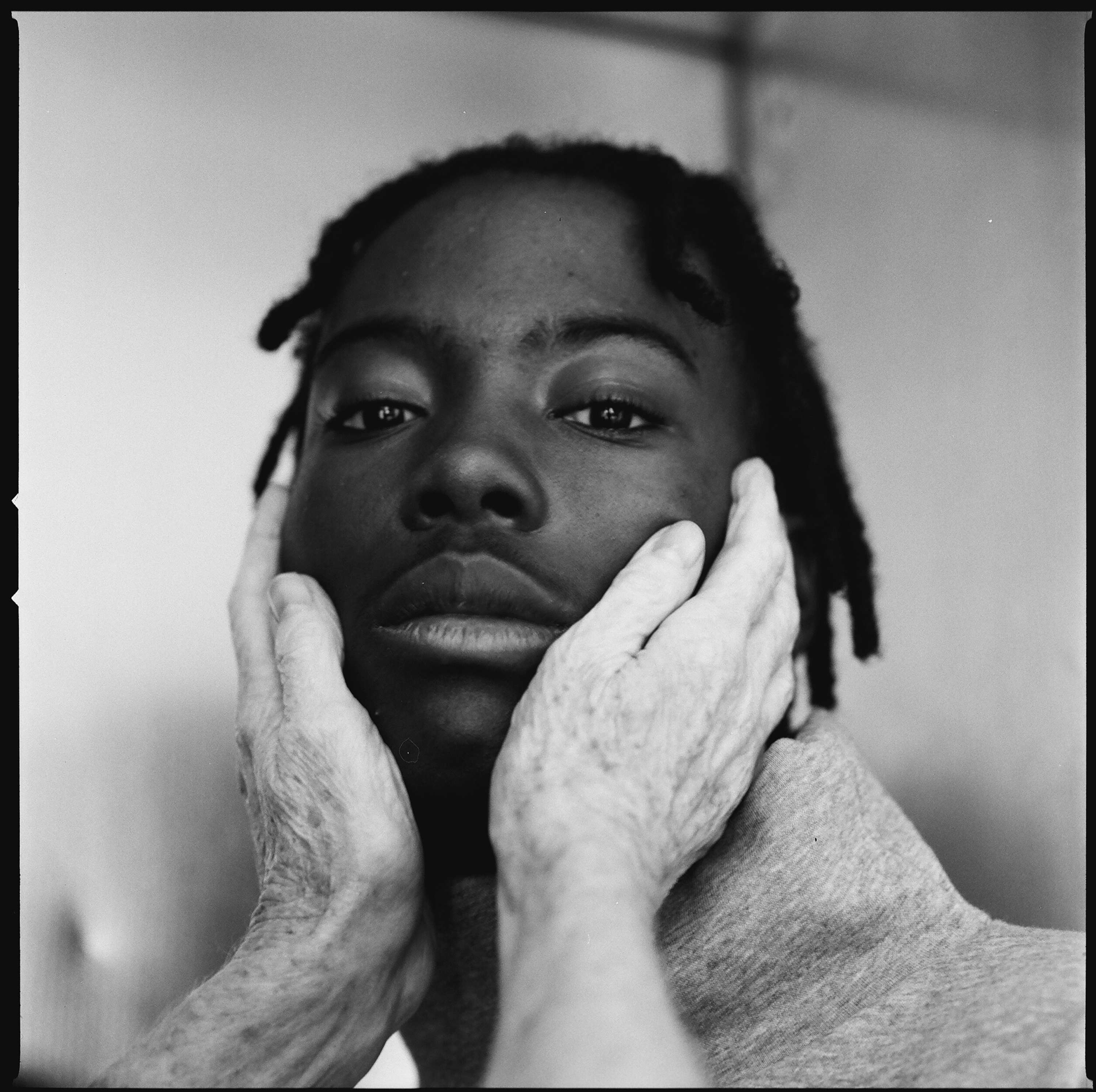Wellbeing isn't White for tiata fahodzi
jamel alatise is a socially engaged Artist—Creative. Focussed primarily on poetry and photography, Jamel’s work in whichever medium prioritises our connections and stories. He is the founder of People Journal—a publication devoted to slow storytelling—and is an ardent explorer of Art, Culture and Design. Here he writes on his own experiences with maintaining wellbeing, as well as urging us to practise self-care not as a luxury, but as a necessity.

It’s hard not to notice how on-trend wellbeing and self-care rituals have become. I am blessed enough to say that I grew up in a family where a lot of these things — meditating, bathing for pleasure, taking care of our spaces and connecting with literature for joy — were all a part of our routines and family-culture.
Since the rise in popularity for these self-care acts, wellbeing has been presented back to us as a form of luxury — the only way to escape from the hustle and bustle of our frantic city lives. Yoga for yummy-mummies that need a break from the weight of childcare, meditation retreats for the people that can afford nine days away from their lives, and crystal and sage for the entry-level spirit warriors, YouTube tutorial-ing themselves toward the spiritual awakening and nirvana we should all crave if we haven’t been living in caves.
Perhaps the current trends in the rise of wellbeing point towards the necessity for it; the UK’s population of 65 million people, as of 2018, reports one in four people will experience a mental health problem each year.
One in six already note experiencing a common mental health problem — anxiety, depression, for instance — in any given week. This data points towards the need for more and better wellbeing strategies, likely explaining the marketability of ‘wellbeing’, especially while mental health issues are still stigmatised in many communities. Unhealthy coping mechanisms are on the rise too, with self-harm and suicidal thoughts increasing. 20 in 100 people experience suicidal thoughts, while seven in 100 report actual self-harm. These issues are disproportionate in black communities in comparison to the rest of the populace. Considering that the struggles we are faced with, and the expectations placed upon us (good or bad), are far more severe than most. In general people of colour are much more likely to be diagnosed with mental health problems, more likely to be admitted to hospital, receive poor treatments and experience low quality of services, which inevitably encourages a disengaging from mainstream treatment, leading to further issues with mental health, our wellbeing and often exclusion from our own communities.
Although we do face more challenges in this country when pursuing our own health and wellbeing, a lot of us also grow up with and are raised alongside practises that promote different facets of our growth and care. Our communities are rich with insights from grandmas, grandfathers, uncles and aunties, brothers and sisters, mothers and fathers. At least for those fortunate and blessed enough to have any sort of family network and root there, these people are guided and lead toward the good life. After all, maintaining our health has been a part of our cultures since the days of dawn.
My Senegalese-French step-mother demonstrated the importance of yoga and a healthy, light diet. Plus, they provided a communal area in the home to check-in and feel loved. My Nigerian father, through his actions, taught the vitality of meditation, being well-read and learned and, perhaps most importantly, the life-saving effects of connecting with our family. My Jamaican mother filled me with tallawah — the essence of being small but mighty — and through all her efforts I have learnt that even I, as an individual, can make a massive and positive impact on lives. Through my mothers, my eyes were opened to the necessity of a clean and minimal home (not that I always have one), as a source and key to mental, as well as physical wellbeing. So with all these influences and teachers in our communities, how is it wellbeing has been hijacked as a white act?
I mention these simple, adaptable and accessible practises — meditation, yoga, keeping a clean room — because all are free acts. So when did it become savoury to sell them back to us as luxury?
Health and Wellness in the UK, as an industry is set to be worth €25 Billion by 2020, a steady rise since 2015, demonstrating the growing popularity of our wellbeing. To clarify, this health and wellness covers a range of products and services, from fitness and the accompanying attire, to products intended to impact our mental and spiritual health — that’s everything from crystals, to weights, to literature on mental health, and even the pills for it.
And so it feels like a safe assumption to say that Health and Wellness will increasingly be marketed to us. But does it have to be done solely by Caucasian characters? Will the imagery around wellness be diversified to include us all? As it’s all who needs access to it! And will this diversifying, and subsequent representation, help? Does the absence of our representation further reinforce the stigma of these important conversations around our mental health and wellbeing in our communities?
I wonder some of these questions knowing totally that an absence of representation, or even misrepresentation, in our media has myriad effects on ourselves as well as others. Including but certainly not limited to: less attention and care from our doctors (a serious concern coming from a very subtle source) and poor self-esteem and self-image — both symptoms and causes of ailments. But perhaps that’s the point? If it’s generating all this revenue. Perhaps while it’s still profitable for our wellbeing to be unstable, we won’t see shifts in these mammoth landscapes so long as it causes us stress. But how useless will that be?
We get a lot from being well! From being our best selves, or even just our content selves. After all, it was Buddha who stated: contentment is the greatest wealth. It’s a great gateway to wellbeing, one that we don’t have to pay for. But we certainly do have to practise — gratitude, candour, openness, the power of “hello” and “no.” I always share that I’m open because conversation with my friends and family is cheaper than therapy. And while I say it in jest, and nothing can replace the value of expertise and professional help, I do still stand by this statement. Help and support is always around us, and likely more abundant than you thought, from unlikely places. A friend and caring heart often just a call or text away.
I mention this because the importance of reaching out — such a simple act — often goes amiss. If there’s anything our single biggest killer of men under 45 in the UK shows us (it’s suicide, by the way), it’s that we can often feel hopeless when surrounded by so many channels to help. I think this is the best solution to our wellbeing issues as a wider community: connection. It’s something we can do externally: calling our friends, seeking professional help, joining a sports club. As well as something we can do internally: keeping a journal, practising mindfulness, making time for a hobby each day.
I really believe in the power of simplicity to overcome this very complex issue. So much so that my final thoughts are quite minimal too: Connect. Discover. Explore. Connect with yourself, your friends and family, and a service provider if you need. Discover what helps you maintain your wellbeing, it’s a personal journey after all. Is it hobbies like crafting, writing or stretching? Maybe visiting friends and family. And lastly, explore. Always keep a curious mind with eyes open upward to the world — explore all the things there are to be well about, to be well for, to be well because of. You’ll be surprised what you discover about yourself and our world.
(Statistics from Mental Health Foundation. If you require additional support with your mental health please contact Samaritans Charity by calling their number: 116 123)



